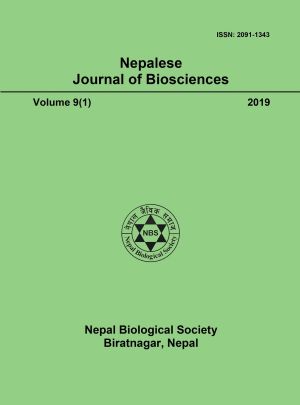Solid waste management in Belbari Municipality, Morang, Province 1, Nepal
DOI:
https://doi.org/10.3126/njbs.v9i1.51731Keywords:
Biodegradable, composting, dumping, education, incomeAbstract
The study was done from January to June of 2018 in Belbari Municipality with the aim to estimate the total waste production, quantity of biodegradable and non-biodegradable, some parameters of solid waste and to detect the common methods adopted in waste management and the relation of economic level in waste production and relation of the education level of people and their ideas or degree of satisfaction for the existing management system. Direct fieldwork was done for the quantification and sorting of the wastes. pH was tested according to Pathak (2017). The temperature was measured according to Daniel (1987) and moisture content by the method of Trautmann (1996). The total waste from Belbari Municipality produced per day was 17.500 tons. The waste contained 62.83% biodegradable and 37.17% nonbiodegradable. The moisture content of dumped wastes was 66.64%, the temperature was 3.33°C, higher than the atmosphere. The average pH of all months was 5.05. On the basis of Chi-square test, there was no relation between the economic level and type of wastes (Biodegradable and non-biodegradable) (p>0.05). The most of the respondents (48.5%) revealed that they manage the waste by dumping with cattle dung. On the basis of the Chi-square test, there was no relation between education level and opinion on the demand for new waste management project (p>0.05).




